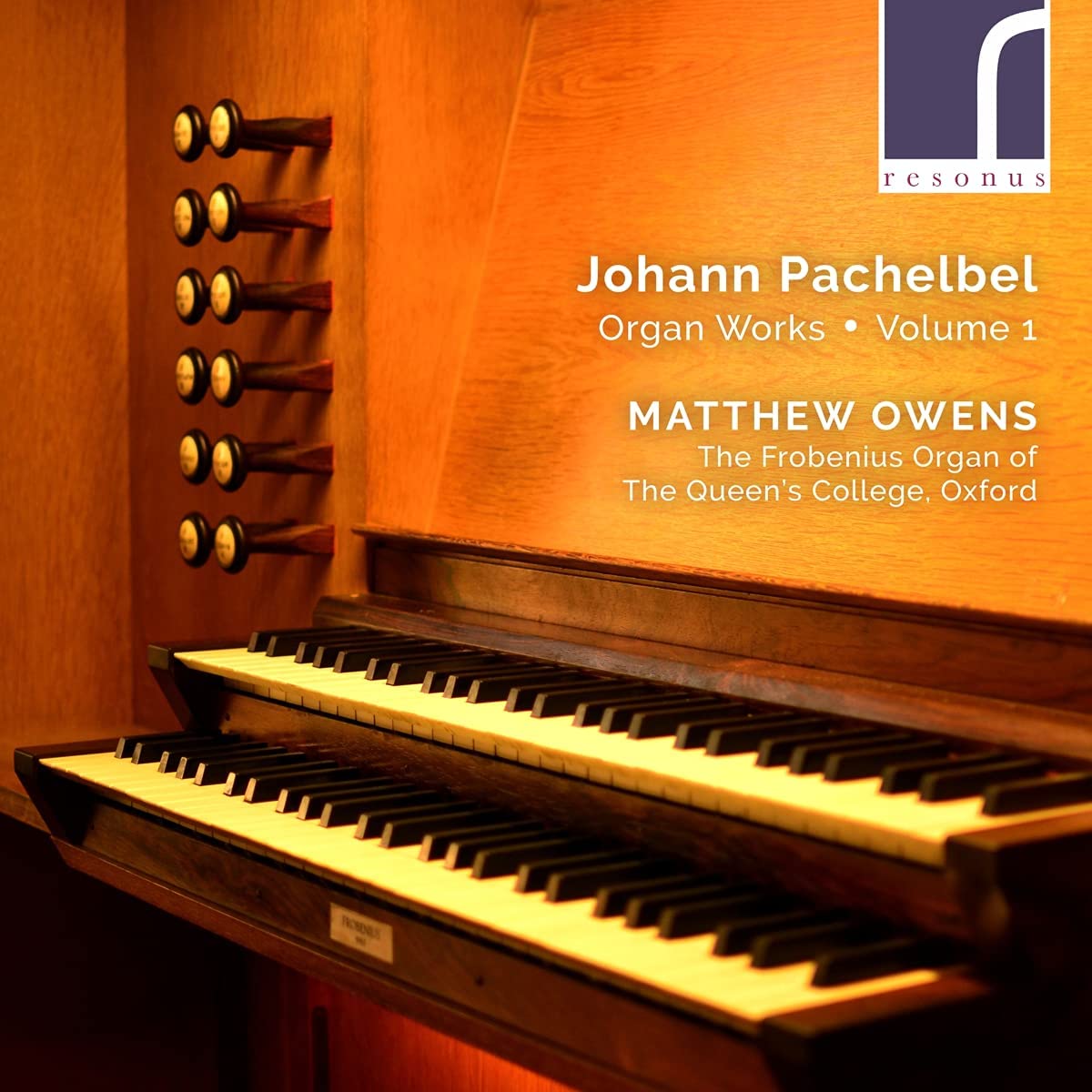Matthew Owens, The Frobenius Organ of The Queen’s College, Oxford
71:03
Resonus RES10285
It looks as if this is to be the first volume of a complete recording of Johann Pachelbel’s organ music and that in itself is to be warmly welcomed. Pachelbel’s organ music occupies a seminal place in the development of a style of composition that is more southern German than northern in style and forms a bridge between the freer, more rhapsodic style of composers like Frescobaldi and Froberger and the more tightly worked contrapuntal compositions of the more northerly school. Although he moved to Eisenach and then Erfurt after a spell at St Stephen’s in Vienna, he later moved to Stuttgart and then to Gotha before returning to his native Nuremberg.
When James Dalton persuaded Queen’s to commission a new mechanical action organ on which he could teach from Frobenius in 1962, there were mutterings: how could such an instrument accompany the psalms to Anglican chant let alone Stanford in Bb? But its beautiful workmanship and clear voice soon won hearts as well as minds, and it remains not only the first but arguably the best Werkprinzip instrument on which to play the Baroque repertoire in England to this day. While it is not a copy of any particular historic instrument, it is undoubtedly inspired by the school of organ builders who created wonderful instruments across north Germany, Holland and Denmark, and is perfect for that repertoire.
But I am not sure why Matthew Owens chose this instrument for Pachelbel. Will all the volumes be recorded there? Pachelbel’s music contains preludes, toccatas, fugues and sets of chorale partitas, as well as chorale preludes. But it also contains music influences more by the Roman Catholic tradition of Italy and Austria, like the Magnificat 5th tone fugues (P314-325) recorded here, and I would have liked to hear some of the splashier music played on an instrument that is less precise and perhaps more colourful, owing more to the central and southern German schools of organ building.
But that said, I enjoyed Matthew Owen’s playing tremendously, and warmly welcome this first CD. Because of the clarity of the Frobenius and the cleanness of his playing, not a note is lost. Yet something is missing: many southern German instruments include a tierce in their chorus mixtures and the Frobenius pedal Fagot is no substitute for a full-length Posaune. It is in the Ciacona in F minor that I think the Frobenius scores most highly, where the variations can be scaled up subtly without needing excessive contrasts in volume.
The sets of chorale variations follow a pattern that sets up a challenge for an organist: how do I register these within an overall framework that underlines the mood of the chorale involved without falling for the temptation to seek variety at any price? With a small organ, however beautifully voiced, there are limits to the possible registrations – limits exploited tellingly in the three chorale preludes (P843 and 844, and P106). With the clarity of Queen’s chapel, we hardly need what I usually lament the absence of – the detailed registration for each piece. Nonetheless, I think this ought to become standard practice for either the liner notes or an accompanying reference to a website.
I much look forward to the next volume.
David Stancliffe
